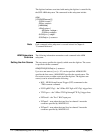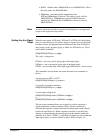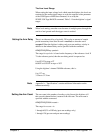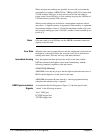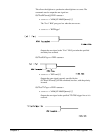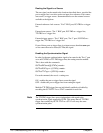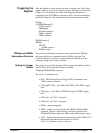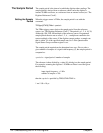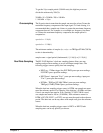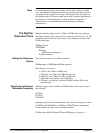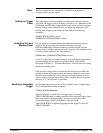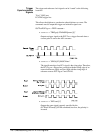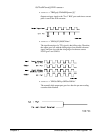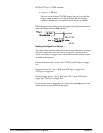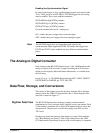
The Sample Period The sample period is the interval at which the digitizer takes readings. The
sample period is derived from a reference which can be the digitizer’s
internal 20 MHz oscillator, or a reference from an external source (see "The
Digitizer Reference Clock").
Setting the Sample
Period
When the trigger source is TIMer, the sample period is set with the
command:
TRIGger[:STARt]:TIMer1 <
period
>
The TIMer trigger source derives the sample period from the reference
source (see "The Digitizer Reference Clock"). The period is a 1, 2, 4, 10, 20,
40 through 1E8, 2E8, 4E8 multiple of the reference source. Programmed
sample periods that are not an exact 1, 2, 4, ... multiple are rounded to the
nearest multiple of the source. If the digitizer cannot produce a sample rate
that is within 1% of the specified sample rate, bit 2 of the Questionable
Signal Status Group condition register is set.
The sample period required can be determined two ways. First, to take a
given number of samples of a signal with frequency (f), the sample period is
computed as:
<period > = signal period / number of samples
The reference is then divided by a value (N) which gives the sample period.
For example, assuming the digitizer’s 20 MHz oscillator is used and given
the following:
input signal frequency = 1 kHz
number of samples = 100
then the <period > specified by TRIG:STAR:TIM1 is:
1 ms / 100 = 10
µs
122 Understandin
g
the HP E1429 Di
g
itizer Chapter 3



